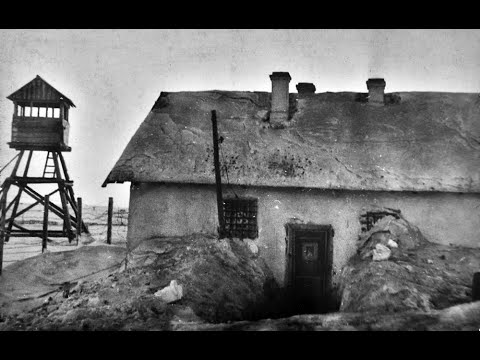
Read the book: https://amzn.to/3kdxihW
Gulag: A History, also published as Gulag: A History of the Soviet Camps, is a non-fiction book covering the history of the Soviet Gulag system. It was written by American author Anne Applebaum and published in 2003 by Doubleday. Gulag won the 2004 Pulitzer Prize for General Non-Fiction and the 2004 Duff Cooper Prize. It was also nominated for the National Book Critics Circle prize and for the National Book Award.
The book charts the history of the Gulag organization; from its beginnings under Vladimir Lenin and the Solovki prison camp, to the construction of the White Sea Canal, through its explosive growth in the Great Purge and the Second World War. The book tracks its diminution following the death of Joseph Stalin and its final closure in the 1980s. A large portion of the book is devoted to covering lives and deaths of camp inmates, including their arrest, interrogation, trial, transportation, the details of the rigors of their working and living conditions, the privations of starvation and disease, and the circumstances of their deaths. The book draws heavily on Soviet-era archives and on the diaries and writings of camp survivors, including the works of Aleksandr Solzhenitsyn, Varlam Shalamov, and Gustaw Herling-Grudziński, among many others.
The author of the book, Anne Applebaum, has been described as a “historian with a particular expertise in the history of communist and post-communist Europe.” Gulag was Applebaum’s first widely acclaimed publication, followed by Iron Curtain: The Crushing of Eastern Europe, 1944-1956 published in 2012 and Red Famine: Stalin’s War on Ukraine published in 2017. Gulag earned her the Pulitzer Prize for General Non-Fiction in 2004.
The book is a compilation of first-hand testimonies of what was lived in the Gulag concentration camps, and the author praises Russian author Aleksandr Solzhenitsyn along with countless other authors as a source for her investigation and for their ability to “probe beneath the surface of everyday horror and to discover deeper truths about the human condition.”
https://en.wikipedia.org/wiki/Gulag:_A_History
The Gulag was the government agency in charge of the Soviet network of forced labour camps which were set up by order of Vladimir Lenin, reaching its peak during Joseph Stalin’s rule from the 1930s to the early 1950s. English-language speakers also use the word gulag in reference to each of the forced-labor camps that existed in the Soviet Union, including the camps that existed in the post-Lenin era. The full official name of the agency changed several times.
The internment system grew rapidly, reaching a population of 100,000 in the 1920s. By the end of 1940, the population of the Gulag camps amounted to 1.5 million. The emergent consensus among scholars is that, of the 14 million prisoners who passed through the Gulag camps and the 4 million prisoners who passed through the Gulag colonies from 1930 to 1953, roughly 1.5 to 1.7 million prisoners perished there or they died soon after they were released. Some journalists and writers who question the reliability of such data heavily rely on memoir sources that come to higher estimations. Archival researchers have found “no plan of destruction” of the gulag population and no statement of official intent to kill them, and prisoner releases vastly exceeded the number of deaths in the Gulag. This policy can partially be attributed to the common practice of releasing prisoners who were suffering from incurable diseases as well as prisoners who were near death.
Almost immediately after the death of Stalin, the Soviet establishment started to dismantle the Gulag system. A mass general amnesty was granted in the immediate aftermath of Stalin’s death, but it was only offered to non-political prisoners and political prisoners who had been sentenced to a maximum of five years in prison.
Gulags appear in various modern media such as movies and video games as a popular setting or background. The Call of Duty series has many references to the gulag. A contemporary notable appearance of the gulag is the 2020 video game Call of Duty: Warzone, which has a mechanism whereby killed players are sent to the Gulag, where they can engage in a 1v1 gunfight for a chance to return to the battlefield proper. It also appears in the show Stranger Things’s season 4, when Jim Hopper is sent to a gulag camp.
Mkrtich Armen, an Armenian writer who was imprisoned in 1937 and rehabilitated in 1945, published a collection of his memories under the title “They Ordered to Give You” in 1964.
Gurgen Mahari, an Armenian writer and poet, wrote “Barbed Wires in Blossom”, a novella based largely on his personal experiences in a Soviet gulag.
https://en.wikipedia.org/wiki/Gulag
Image: Російський Державний архів, Москва, CC BY-SA 3.0 https://creativecommons.org/licenses/by-sa/3.0, via Wikimedia Commons
source






And that was for death penalty..what they did there to People.